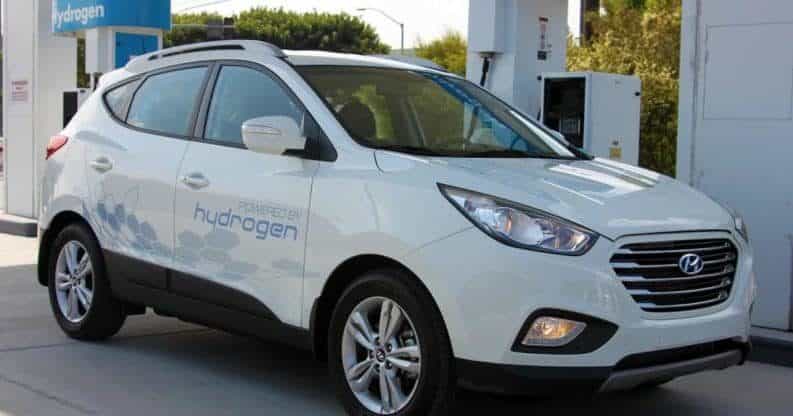It’s officially happening. Hyundai is now working on the second generation of its Tucson fuel cell-powered SUV. The brand is looking to create an upgraded version of the fuel cell for 2018, and is promising to provide an even bigger range than the 265 miles that was found on the 2014 Hyundai Tucson on a full tank. In particular, Hyundai is looking at a 30% increase to the driving range. This is particularly important, since vehicles like the Toyota Mirai already out-cell (see what I did there?) the first-gen Tucson because of their driving range. The Mirai, in particular, already gets 312 miles on a fully charged hydrogen tank. That’s 50 miles more than the current Tucson.
50 miles is a lot, especially in the hydrogen fuel-cell world. It could mean the difference between making that trip to work every day of the week, without having to fill up, or needing to stop and refuel on day three or four, depending on how much you drive.
First-Gen Tucson
To put the Tucson in an even worse position, it’s now the most expensive vehicle of its kind. Released back in July of 2014, it still has less single-fill range compared to competitors (like I mentioned above). Then again, it is an SUV. The Mirai isn’t. Which means for that extra price and lesser driving range, you are getting better passenger and cargo space, utility, and safety.
Second-Generation Tucson Details
The 30% upgrade should bump the Tucson’s fuel cell range up to 348 miles on a full hydrogen tank. This is a much-needed increase, and now provides a larger range than most of the current competition. More importantly, range-anxiety may go away for those who buy the fuel-cell Tucson upon its release in 2018.
Now, it will have the perks of an SUV this size, but also have a range that matches (and hopefully beats) the other competitors it’s released alongside.
But, will it be enough?
Will it Be Enough?
The short answer? In the world of fuel cell vehicles, we’ll have to wait and see what the competition is doing. However, it’s more than likely that this will be a good amount of driving range.
Long answer? In 2018, no matter the driving range, it will never be enough. Why? Because, America simply isn’t ready for fuel cell vehicles yet. Refilling stations for hydrogen fuel cell vehicles are currently even harder to find than recharging stations for electronic cars — and that’s already pretty hard. Since the first-generation Tucson Fuel Cell model is only available in California, it’s a safe bet that’s where the second-generation will be released as well. At least, for now. Topping it all off, you’ll have to deal with a $50,000 price tag – reasonable for a hydrogen fuel cell vehicle, especially when the government subsidies are applied. But not when it comes to the average price of a gas-powered car, which is currently just over $31,000.




